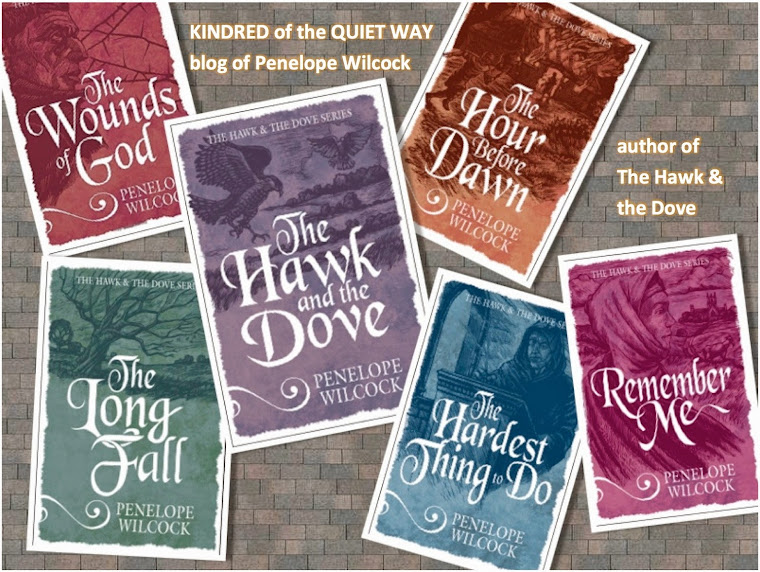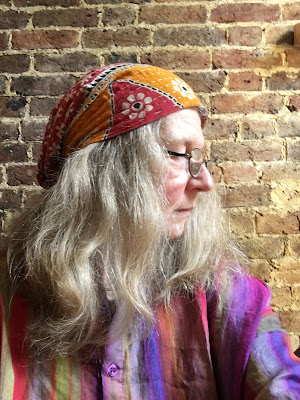I wear headcoverings mostly just because I like them. One of the things I enjoy is that there is a sort of spiritual resonance/connotation, and I feel the energy/vibration of it when I wear a head covering.
In my case, it isn't a statement — it's not an ideological declaration — but it exerts an undeniable influence on how I feel. It emanates peace for me, and is a reminder to live quietly and intentionally. It speaks to me of the slowness and simplicity I would like to characterise the path I choose to walk.
But it's not a partisan affiliation of any kind, religious or cultural. It's just me.
Here is how to make the kind I wear.
I make them from vintage kantha scarves sourced on eBay from India.
Here's one I made a hat from today.
There's only two measurements you need — the first is from behind the lower part of your right ear up over your head to behind the lower part of your left ear. For me that's a little less than 20 inches. I have a M/L size head.
You'll also be sewing a channel for elastic, so you need to add on an inch or so to accommodate that.
The second measurement is the front to back (brow to back of head). For me that's about 15/16 inches plus an allowance for the channel I'll be sewing for the gathering elastic. So I cut at maybe 16.5 inches.
Here's the piece I cut from the kantha scarf to make my hat.
Then you use a steam iron to press the raw edge in. You can stitch that down if you're feeling industrious, or just leave it pressed like this.
Then fold and press again to make a channel for the elastic to thread through.
Stitch it down all the way round.
The stitches will show through on the other side of course, but it won't matter, as you'll soon see.
Now you are ready to put in the elastic. This is how much I use.
Yes. I can never get over how short a piece it is! about 5 inches, just over.
You use a safety pin to thread elastic through the channel.
The tail needs to be pinned in place so it doesn't just get pulled through.
The elastic gathering is what determines how loose/tight the hat will be, so you'd be wise in the first instance to pin before you sew. The elastic has to be sewed in place very firmly, because it's under such tension. You won't want to be unpicking that again. Pin first, then sew.
Then, when you are happy with the result, stitch the elastic in place really well at the 2 ends of the channel, both the protruding ends and where you can feel it inside the channel.
That's all. You're done.
You can see that though one side makes a contrast edging, it doesn't matter, that looks fine as a decorative detail. The hat is still reversible.
Here it is on.
Front.
Side.
Reversed.
Done. Hand-sewn, one and a half hours max.
































